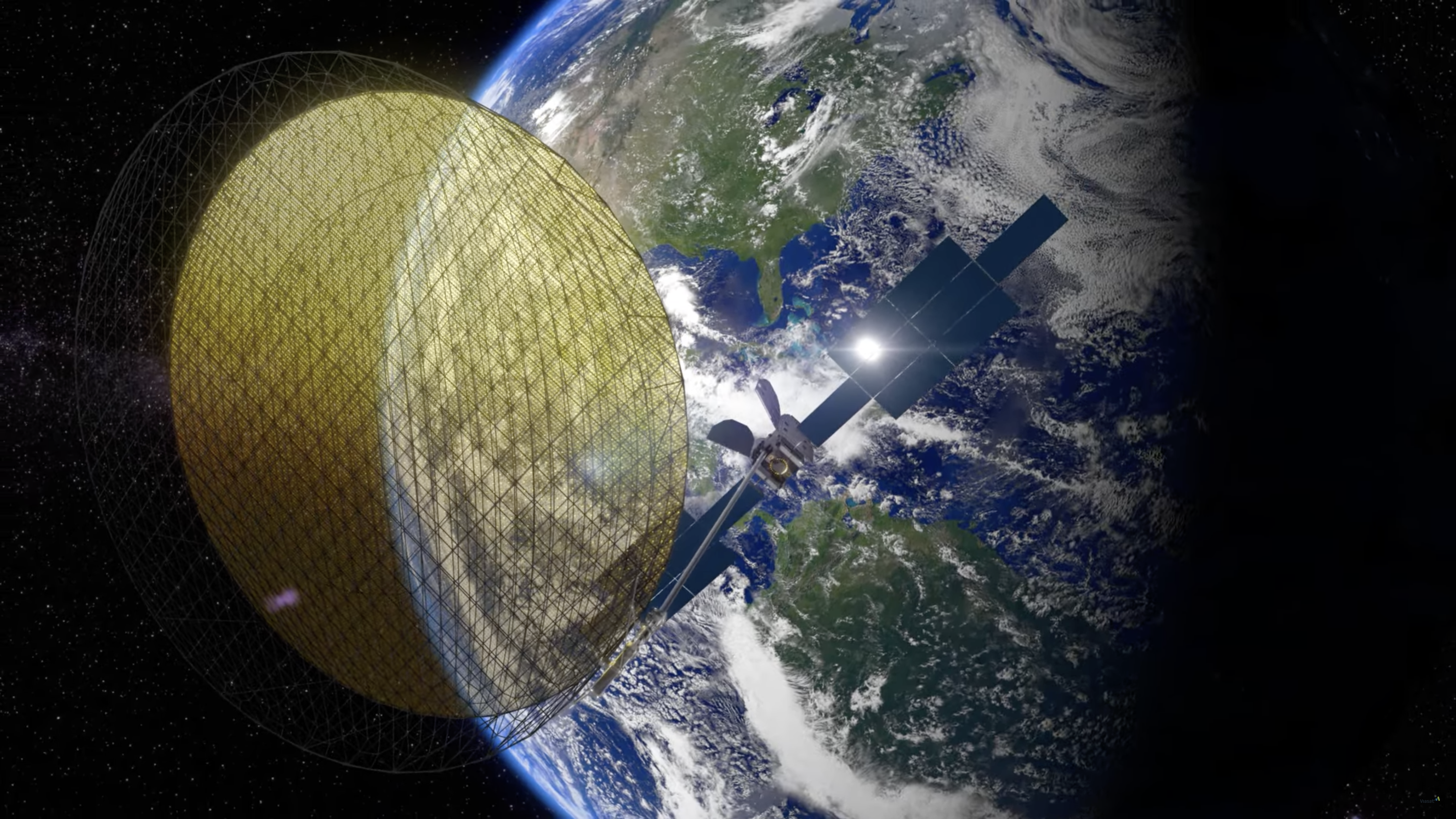CLEVELAND — The potential failure of a Viasat broadband satellite could result in a massive claim and a “huge hit” for the space insurance sector, one insurer warns.
Viasat announced July 12 that it had encountered an “unexpected event” during the deployment of the large reflector on its ViaSat-3 Americas satellite after its April 30 launch. The company did not provide more details about the problem but said it was working with the manufacturer of the reflector to try and resolve it.
The reflector features wire mesh, highly reflective at Ka-band frequencies, supported by a structure of carbon fibers and graphite. The boom connecting the reflector to the spacecraft is a larger version of structures uses to deploy the sunshield on the James Webb Space Telescope, the company said in a blog post last September.
Viasat has not provided any updates on the status of the reflector since the announcement and suggested it may wait until a quarterly earnings call scheduled for Aug. 9. If Viasat is unable to deploy the reflector, many in industry expect it to file an insurance claim worth as much as $420 million.
The space insurance sector is closely monitoring the situation, said Amy Avjean, senior vice president and third party space liability leader at Marsh, during a panel discussion at the American Astronautical Society’s Glenn Memorial Symposium July 17.
“That could be a huge hit to the aerospace liability market in general,” she warned. A large claim could end up reducing capacity for other space insurance customers, she said.
She noted, though, that a potential ViaSat-3 claim would pale in comparison to another challenge for the broader aerospace and aviation insurance market. Leased commercial aircraft stranded in Russia because of the war with Ukraine have resulted in $7 billion in claims, far larger than premiums for the overall sector.
“If something happens at the $7 billion level, it’s going to be a huge hit to the aerospace market,” she said. Those claims are being litigated, a process that could take years.
Insuring space travelers
Avjean also discussed another emerging issue for the space insurance market: liability insurance for people flying on commercial spacecraft.
“It’s an interesting challenge in the insurance industry,” she said. “The most that we’ve been able to obtain is $100 million in limited liability. I don’t know if that limit is sustainable going forward.”
The field is still new with many uncertainties and nuances. “I think we get into some murky waters when we start talking about on-orbit liability and government astronauts,” she said. “There’s a lot of things that need to get litigated.”
Avjean also suggested a lack of insight into the leading commercial human spaceflight provider, SpaceX. “One person is launching people into space and he’s doing a very good job of it, but he doesn’t use insurance so I don’t know what he’s doing.”
